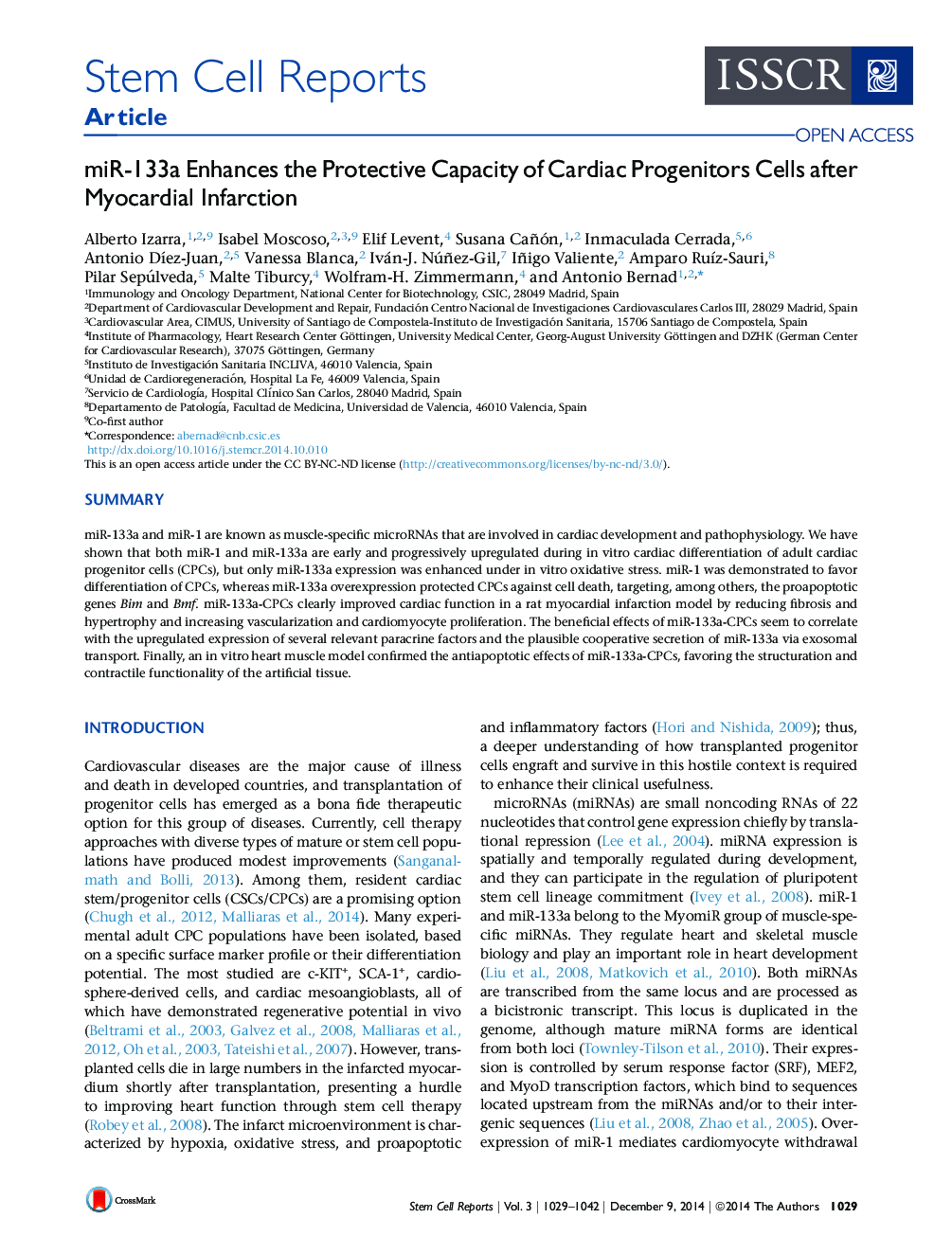| Article ID | Journal | Published Year | Pages | File Type |
|---|---|---|---|---|
| 2093682 | Stem Cell Reports | 2014 | 14 Pages |
•miR-1 and miR-133a have a role in adult cardiac progenitor cells (CPCs)•miR-133a-CPCs protect cardiac function•miR-133a-CPCs increase vascularization and protect against hypertrophy•miR-133a is enriched in CPCs-derived exosomes
SummarymiR-133a and miR-1 are known as muscle-specific microRNAs that are involved in cardiac development and pathophysiology. We have shown that both miR-1 and miR-133a are early and progressively upregulated during in vitro cardiac differentiation of adult cardiac progenitor cells (CPCs), but only miR-133a expression was enhanced under in vitro oxidative stress. miR-1 was demonstrated to favor differentiation of CPCs, whereas miR-133a overexpression protected CPCs against cell death, targeting, among others, the proapoptotic genes Bim and Bmf. miR-133a-CPCs clearly improved cardiac function in a rat myocardial infarction model by reducing fibrosis and hypertrophy and increasing vascularization and cardiomyocyte proliferation. The beneficial effects of miR-133a-CPCs seem to correlate with the upregulated expression of several relevant paracrine factors and the plausible cooperative secretion of miR-133a via exosomal transport. Finally, an in vitro heart muscle model confirmed the antiapoptotic effects of miR-133a-CPCs, favoring the structuration and contractile functionality of the artificial tissue.
